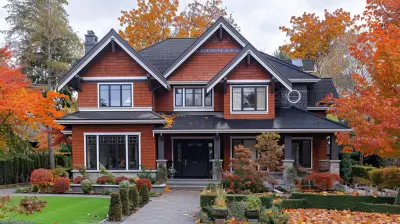How Population Growth Impacts Real Estate Opportunities
26 August 2025
Population growth is like fuel to the fire of the real estate market. More people mean more homes, more businesses, and more infrastructure. But how exactly does this impact real estate opportunities? Is it all good news for investors, or are there hidden challenges? Let’s dive into the details and uncover the real impact of a growing population on the real estate sector. 
The Link Between Population Growth and Real Estate
When a city’s population starts booming, the demand for housing skyrockets. This isn't just about more people needing places to live; it's also about how cities adapt. New developments, changing land values, and shifting buyer preferences all contribute to how real estate evolves.Imagine a small town suddenly becoming a hotspot. What happens? Property prices increase, new developments sprout up, and rental demand surges. That’s the natural flow of real estate responding to population dynamics. 
1. Increased Demand for Housing
More People, More Homes Needed
The most obvious impact of population growth on real estate is the heightened demand for housing. Whether it's buyers looking for their dream homes or renters searching for affordable apartments, the need for residential properties rises.- Home Prices Surge – With limited supply and growing demand, property prices naturally increase. In cities with rapid population growth, real estate values can jump significantly over just a few years.
- Rental Markets Boom – Investors benefit from high rental demand, leading to lower vacancy rates and increasing rental prices. Landlords in growing cities often find tenants quickly, ensuring steady cash flow.
Urban vs. Suburban Growth
As cities become crowded, people look for alternatives. Suburban areas, once ignored, suddenly become prime real estate hotspots. Developers take advantage of this shift, leading to new housing communities, shopping centers, and better infrastructure in suburban regions.
2. Commercial Real Estate Expansion
Businesses Follow the People
As more people move into a city or region, businesses expand to cater to the growing population. This means:- More Retail Stores – Grocery stores, shopping malls, and entertainment centers pop up to serve new residents.
- Office Spaces in Demand – Companies open new offices or expand current ones to accommodate increasing employment needs.
- Hospitality & Tourism Growth – Hotels, restaurants, and recreational spaces see a surge in demand, making commercial real estate a lucrative investment.
For real estate investors, commercial properties in high-growth areas can offer long-term gains through leasing and appreciation. 
3. Infrastructure Development Drives Real Estate Value
Better Roads, Schools, and Hospitals Fuel Demand
Population growth forces governments and developers to invest in infrastructure. Improved transportation, new schools, and better healthcare facilities attract more residents, making certain areas more desirable for real estate investments.- Connectivity Matters – Properties close to new highways, metro stations, and airports see rapid value appreciation.
- Educational Hub Effect – Areas with reputed schools and universities often witness rising property demand. Parents are willing to pay a premium to live near good educational institutions.
Investors keeping an eye on upcoming infrastructure projects can spot opportunities before prices peak.
4. Changing Real Estate Trends Due to Demographic Shifts
Young Professionals & Remote Work Impact Housing Needs
The way people live and work is evolving. As more young professionals enter the workforce and remote work becomes mainstream, housing trends shift:- Co-Living Spaces Rise – Shared housing grows in popularity among young urban dwellers looking for affordability and social interaction.
- Home Office Boom – Buyers seek larger homes with dedicated office spaces, increasing the demand for bigger suburban houses.
- Tech-Integrated Homes – Smart technology in residential properties is no longer a luxury but a necessity.
Investors and developers who adapt to these changing demands can stay ahead of the market and maximize their returns.
5. Challenges of Population Growth in Real Estate
While population growth opens up massive opportunities, it also comes with challenges:- Housing Affordability Issues – A sudden rise in demand can make housing unaffordable for many, leading to government intervention through rent control or housing policies.
- Overcrowding & Resource Strain – Rapid urbanization can lead to congested neighborhoods, inadequate resources, and declining quality of life.
- Market Saturation Risks – If too many new developments flood a growing area, property values can stagnate or decline due to oversupply.
Investors must carefully assess market trends and government policies to avoid pitfalls and maximize profits.
6. Best Real Estate Investment Strategies in a Growing Market
Buy and Hold Strategy
Purchasing property in high-growth areas and holding onto it allows for long-term appreciation. As populations grow, property values inevitably rise, offering investors solid returns over time.Short-Term Rentals for High Demand
With increasing migration and tourism, short-term rental properties (like Airbnbs) in growing cities can generate massive profits. Investors can capitalize on transient populations looking for temporary living spaces.Investing in Undervalued Areas
Instead of going for already expensive zones, looking at up-and-coming neighborhoods can yield higher returns. Areas poised for population increases but still undervalued offer the best opportunities for real estate growth.Commercial Real Estate for Passive Income
Investing in shopping centers, office spaces, or mixed-use buildings in a rapidly expanding area ensures steady rental income and long-term value appreciation.Final Thoughts
Population growth is a powerhouse that drives real estate opportunities. Whether it’s housing demand, commercial expansion, or infrastructure developments, the impact is substantial. But with great opportunity comes responsibility. Investors need to stay ahead of market trends, monitor population shifts, and make informed decisions to truly benefit from the real estate boom.If you’re looking at real estate as an investment, keeping an eye on population trends is a smart move. After all, where people go, real estate follows!
all images in this post were generated using AI tools
Category:
Real Estate MarketAuthor:

Lydia Hodge
Discussion
rate this article
1 comments
Dusk Miller
Great insights! It's fascinating how population growth shapes our communities and influences real estate trends. As a homebuyer, I’m excited to see how these changes create new opportunities for everyone. Keep it coming!
September 2, 2025 at 10:25 AM

Lydia Hodge
Thank you! I'm glad you found the insights valuable. Exciting times ahead for homebuyers as population growth continues to reshape our communities!


